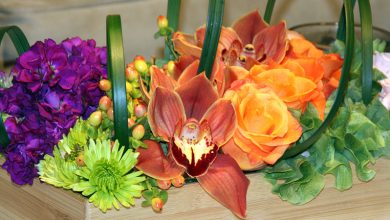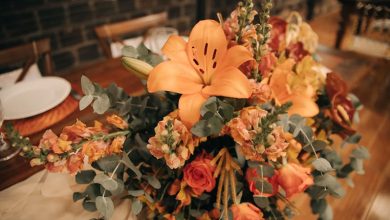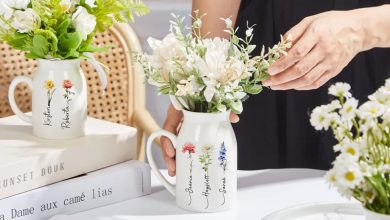5 Best Ways to Wash Artificial Flowers Without Damage
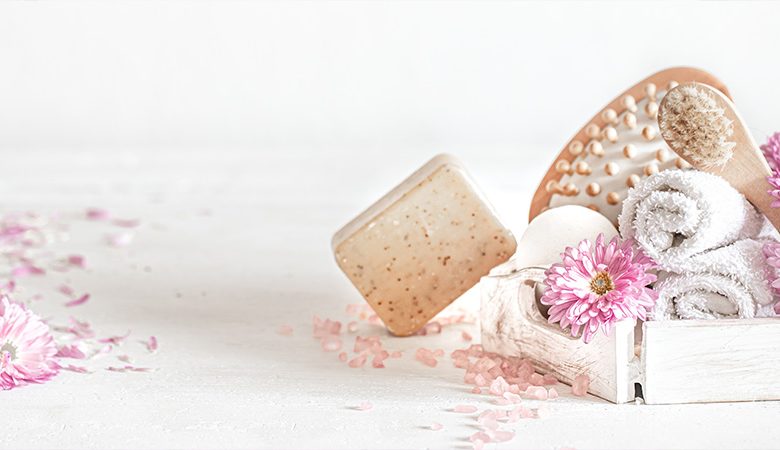
Artificial flowers are a beautiful addition to any home decor, but over time, they can accumulate dust and dirt, losing their luster and vibrancy. Proper cleaning is essential to maintain the appearance of artificial flowers without causing damage. Here are five of the best ways to wash artificial flowers effectively and safely.
1. Gentle Dusting with a Soft Brush
Dusting artificial flowers with a soft brush is considered the best way to wash artificial flowers as it is one of the simplest and most effective methods for keeping them clean. This gentle approach removes dust and debris without causing damage to delicate petals or stems.

Here’s how to do it effectively:
Step-by-Step Dusting Process:
- Select a Soft Brush: Choose a clean, soft-bristled brush such as a paintbrush or makeup brush. Avoid brushes with stiff bristles, as they may scratch or damage the flowers.
- Start from the Top: Begin dusting at the top of the arrangement and work your way down, gently sweeping the brush over the petals, stems, and leaves.
- Use Light Pressure: Apply light pressure when dusting to avoid bending or breaking the flowers. Use a gentle, sweeping motion to dislodge dust and dirt.
- Pay Attention to Details: Take care to dust hard-to-reach areas, such as between petals or along intricate designs. Use the tip of the brush to reach into crevices and remove debris.
- Repeat as Needed: Depending on the level of dust accumulation, you may need to repeat the dusting process several times to ensure thorough cleaning.
Read More: The 10 Best Artificial Flowers for Living Room Decor: A Complete Guide
Additional Tips:
- Use a Dry Brush: Ensure that the brush is completely dry before using it to dust artificial flowers. Moisture can cause the petals to become damp, leading to damage or discoloration.
- Work in Natural Light: Dusting artificial flowers in natural light can help you see dust and dirt more clearly, ensuring thorough cleaning.
- Rotate the Arrangement: Rotate the arrangement as you dust to access all sides and angles, ensuring that no areas are missed.
Advantages and Disadvantages:
- Advantages: Gentle dusting with a soft brush is safe for most types of artificial flowers and can be done quickly and easily. It does not require any additional cleaning solutions or chemicals.
- Disadvantages: While effective for removing light dust and debris, this method may not be sufficient for more stubborn stains or grime. It also requires manual effort and may not reach into all areas of intricate arrangements.
2. Use a Hairdryer on Cool Setting
Using a hairdryer on a cool setting is another effective method for cleaning artificial flowers, particularly those with intricate designs or hard-to-reach areas. This gentle approach helps dislodge dust and debris without causing damage to delicate petals or stems. It’s considered one of the best ways to wash artificial flowers.
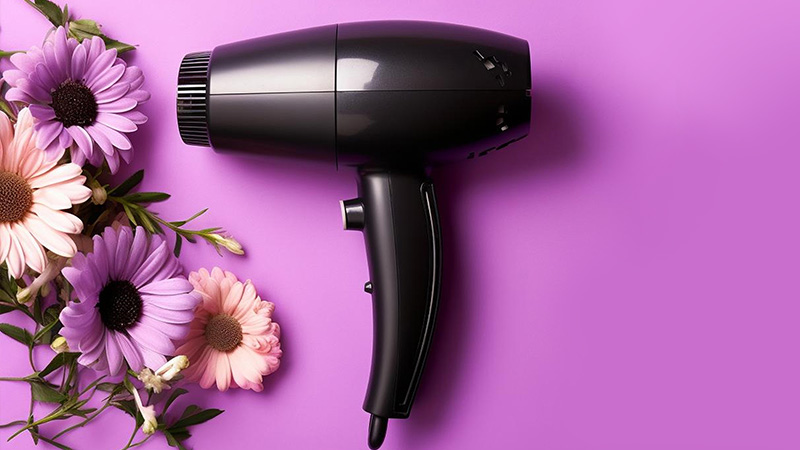
Here’s how to do it effectively:
Step-by-Step Blow-Drying Process:
- Set the Hairdryer to Cool: Ensure that the hairdryer is set to the cool or low-heat setting to prevent damage to the flowers. High heat can cause the petals to warp or melt.
- Hold the Hairdryer at a Distance: Hold the hairdryer several inches away from the flowers to avoid direct heat exposure. Moving the hairdryer too close can cause the petals to become overheated and deformed.
- Use a Gentle, Oscillating Motion: Gently move the hairdryer back and forth over the arrangement, using an oscillating motion to dislodge dust and dirt. Avoid focusing the airflow on one spot for too long to prevent overheating.
- Rotate the Arrangement: Rotate the arrangement as you blow-dry to ensure that all sides and angles are evenly cleaned. This helps to remove dust from hard-to-reach areas and intricate designs.
- Repeat as Needed: Depending on the level of dust accumulation, you may need to repeat the blow-drying process several times to ensure thorough cleaning.
Read More: What is the Best Material for Artificial Flowers? A Complete Guide
Additional Tips:
- Use a Low-Speed Setting: If your hairdryer has adjustable speed settings, choose a low-speed setting to prevent the flowers from being blown away or damaged by strong airflow.
- Work in Sections: Divide the arrangement into smaller sections and focus the airflow on one section at a time. This ensures thorough cleaning without missing any areas.
- Check for Overheating: Periodically check the temperature of the flowers with your hand to ensure that they are not becoming too hot. If the flowers feel warm to the touch, allow them to cool before continuing.
Advantages and Disadvantages:
- Advantages: Using a hairdryer on a cool setting is a quick and efficient way to clean artificial flowers, particularly those with intricate details. It does not require any additional cleaning solutions or chemicals.
- Disadvantages: While effective for removing light dust and debris, this method may not be suitable for more stubborn stains or grime. It also requires manual effort and may not reach into all areas of the arrangement. Additionally, there is a risk of overheating if the hairdryer is held too close to the flowers.
3. Soak in a Gentle Soap Solution
Soaking artificial flowers in a gentle soap solution is considered the best way to wash artificial flowers and is an effective way to remove dirt, grime, and stains from the petals and leaves. This method is particularly useful for cleaning larger arrangements or those with stubborn buildup.
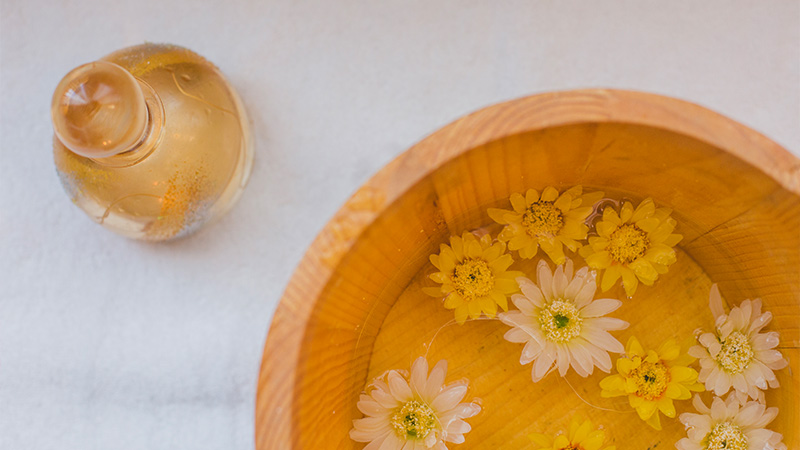
Here’s how to do it properly:
Step-by-Step Soaking Process:
- Prepare the Soap Solution: Fill a basin or sink with lukewarm water and add a small amount of gentle liquid soap. Avoid using harsh detergents or cleaners, as they can damage the delicate petals of the flowers. Stir the solution gently to create suds.
- Submerge the Flowers: Carefully submerge the artificial flowers into the soap solution, ensuring that they are fully immersed. Allow the flowers to soak for 10-15 minutes to loosen any dirt or grime.
- Gently Agitate the Water: After soaking, gently agitate the water with your hands to dislodge any remaining debris from the flowers. Be careful not to crush or damage the petals during this process.
- Rinse Thoroughly: Remove the flowers from the soap solution and rinse them under lukewarm running water. Ensure that all soap residue is removed from the flowers, as leftover soap can leave a sticky residue on the petals.
- Pat Dry with a Soft Cloth: Once rinsed, gently pat the flowers dry with a soft, lint-free cloth to remove excess water. Avoid rubbing or squeezing the flowers, as this can cause damage to the delicate petals.
Read More: The 10 Best Artificial Flowers for Vases: A Comprehensive Guide
Additional Tips:
- Spot Test First: Before soaking the entire arrangement, spot test a small, inconspicuous area to ensure that the soap solution does not cause any damage or discoloration.
- Use a Mild Soap: Opt for a mild, gentle soap that is free from harsh chemicals or additives. Baby shampoo or dish soap diluted in water are suitable options for cleaning artificial flowers.
- Handle with Care: Handle the flowers gently throughout the soaking process to prevent bending or breaking of the stems or petals.
Advantages and Disadvantages:
- Advantages: Soaking artificial flowers in a gentle soap solution effectively removes dirt, grime, and stains without causing damage to the petals. It is a simple and straightforward method that requires minimal effort.
- Disadvantages: While effective for general cleaning, soaking may not be suitable for all types of artificial flowers, particularly those with delicate materials or intricate designs. Additionally, it may take longer to dry large arrangements after soaking, and excess water can seep into the base or stem of the flowers, causing damage over time.
Read More: Top 10 Artificial Flowers for Stunning Home Décor
4. Spot Cleaning with a Damp Cloth
Spot cleaning artificial flowers with a damp cloth is the best way to wash artificial flowers efficiently for removing localized stains or dirt without submerging the entire arrangement. This technique allows you to target specific areas that require cleaning while minimizing the risk of damage to the entire bouquet.
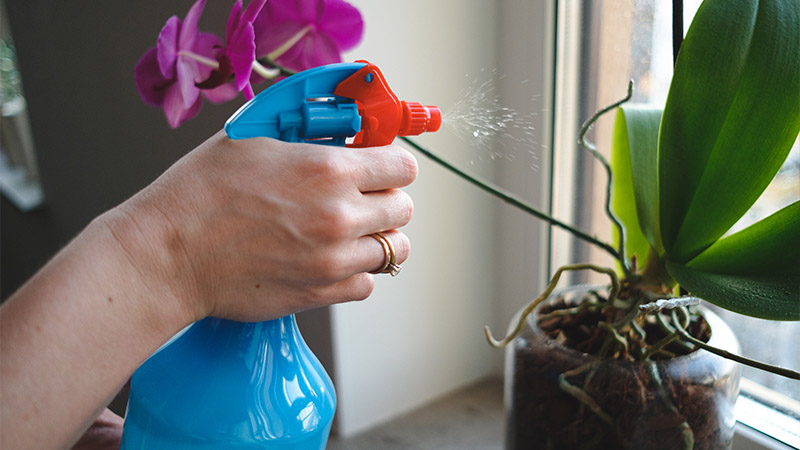
Here’s how to spot clean artificial flowers effectively:
Step-by-Step Spot Cleaning Process:
- Dampen the Cloth: Start by dampening a clean, soft cloth with water. Ensure that the cloth is only slightly damp, as excess moisture can cause damage to the artificial petals or stems.
- Identify the Stained Areas: Carefully examine the artificial flowers to identify any areas with visible stains or dirt buildup. Focus on these areas during the spot cleaning process.
- Gently Wipe the Surface: Using the damp cloth, gently wipe the surface of the stained areas in a back-and-forth motion. Apply light pressure to loosen and lift the dirt or stains from the petals or leaves.
- Repeat as Needed: If the stains persist, continue to gently wipe the affected areas with the damp cloth until the dirt or stains are removed. Avoid rubbing too vigorously, as this can damage the delicate surface of the flowers.
- Allow to Air Dry: Once the spot cleaning is complete, allow the artificial flowers to air dry naturally. Ensure that the flowers are placed in a well-ventilated area away from direct sunlight or heat sources to prevent damage.
Additional Tips:
- Use Mild Soap for Stubborn Stains: For stubborn stains, you can lightly dampen the cloth with a mixture of mild soap and water. However, be cautious not to oversaturate the cloth, as excess soap residue can leave a sticky film on the flowers.
- Test in an Inconspicuous Area: Before spot cleaning the entire arrangement, perform a patch test in an inconspicuous area to ensure that the damp cloth does not cause any discoloration or damage to the artificial flowers.
- Patience is Key: Take your time when spot cleaning to ensure thorough removal of stains or dirt without causing damage to the flowers. Avoid rushing the process, especially when dealing with delicate or intricate designs.
Read More: Top 10 Artificial Flowers for Window Boxes: A Complete Guide
Advantages and Disadvantages:
- Advantages: Spot cleaning allows for targeted removal of stains or dirt without the need for submerging the entire arrangement. It is a quick and convenient method that can be used to maintain the appearance of artificial flowers between more extensive cleaning sessions.
- Disadvantages: While effective for spot cleaning, this method may not be suitable for larger areas of the arrangement or extensive dirt buildup. Additionally, repeated spot cleaning in the same areas may cause wear or damage to the artificial petals over time.
5. Use Compressed Air
Using compressed air is considered one of the best ways to wash artificial flowers, providing an effective method for gently removing dust and debris from artificial flowers, especially those with intricate designs or hard-to-reach areas.
This technique offers a quick and convenient way to maintain the cleanliness of your floral arrangements without the need for water or cleaning solutions.
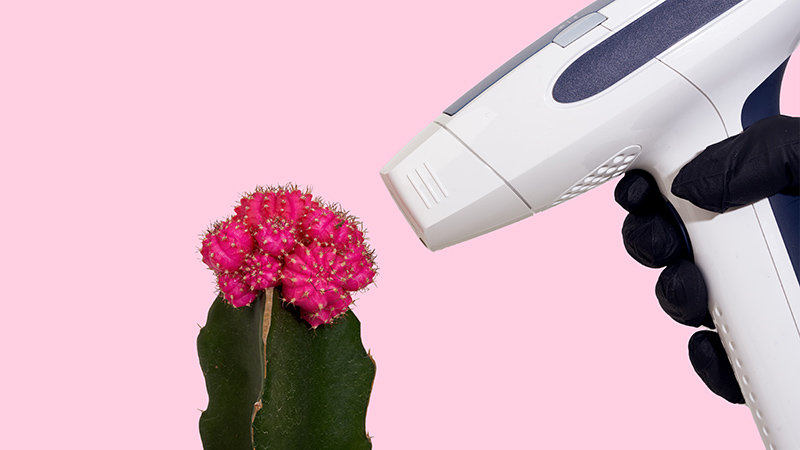
Let’s tackle this the right way:
Step-by-Step Process:
- Select the Correct Nozzle: Choose a nozzle attachment for the compressed air canister that provides a narrow and concentrated stream of air. This will allow you to target specific areas of the artificial flowers with precision.
- Hold the Canister Upright: Hold the compressed air canister upright and ensure that it is positioned at a slight distance from the surface of the flowers. Avoid holding the canister too close to prevent damage from the force of the air.
- Direct the Air Stream: Direct the stream of compressed air onto the surface of the artificial flowers, focusing on areas where dust and debris have accumulated. Move the nozzle in a gentle, sweeping motion to dislodge the particles without causing damage to the delicate petals or leaves.
- Work Methodically: Work methodically from one area of the arrangement to another, ensuring thorough coverage of all surfaces. Pay special attention to any crevices, folds, or intricate details where dust may accumulate.
- Repeat as Needed: If necessary, repeat the process in areas where dust or debris persists. Take care not to overuse the compressed air, as excessive force may cause damage to the artificial flowers.
- Inspect for Remaining Debris: Once you have finished using the compressed air, carefully inspect the artificial flowers to ensure that all dust and debris have been removed. Use a soft brush or cloth to gently dislodge any remaining particles if needed.
Read More: Top 10 Outdoor Artificial Flowers for All-Weather Décor
Additional Tips:
- Use in Well-Ventilated Area: When using compressed air indoors, ensure that the area is well-ventilated to prevent the buildup of airborne particles. Avoid using compressed air near open flames or heat sources.
- Keep Canister Upright: Always hold the compressed air canister upright during use to prevent liquid propellant from escaping. Tilting the canister may result in the release of liquid, which can cause damage to the flowers.
- Test in an Inconspicuous Area: Before using compressed air on the entire arrangement, perform a test in an inconspicuous area to ensure that it does not cause any damage or discoloration to the artificial flowers.
- Use with Caution: While compressed air is generally safe to use on artificial flowers, exercise caution to avoid applying excessive force or directing the air stream too closely to delicate components of the arrangement.
Advantages and Disadvantages:
- Advantages: Compressed air offers a quick and efficient method for removing dust and debris from artificial flowers without the need for water or cleaning solutions. It is especially useful for intricate designs or hard-to-reach areas where traditional cleaning methods may be challenging.
- Disadvantages: While effective for removing surface dust, compressed air may not be suitable for deeper cleaning or stubborn stains. Additionally, repeated use of compressed air may result in the dispersion of airborne particles, which can settle elsewhere in the surrounding environment.
Selecting the Best Way to Wash Artificial Flowers: Choosing the Right Cleaning Method
Selecting the appropriate cleaning method for your artificial flowers is crucial to ensure effective cleaning without causing any damage.
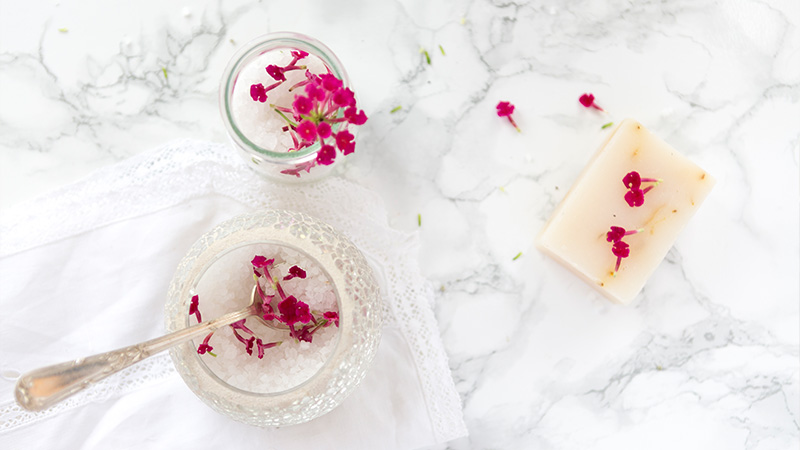
Here are some essential considerations to keep in mind when choosing the right cleaning method:
- Material Composition: Different artificial flowers are made from various materials, such as silk, polyester, or plastic. Each material may require a different cleaning approach to maintain its quality and appearance.
- Level of Dirtiness: Assess the level of dirtiness or staining on your artificial flowers before selecting a cleaning method. Mild dusting may suffice for lightly soiled flowers, while more stubborn stains may require soaking or spot cleaning.
- Complexity of Design: Consider the complexity of the flower arrangement when choosing a cleaning method. Intricate designs with delicate details may require a gentler approach to avoid damage.
- Accessibility of Areas: Take into account the accessibility of different areas of the flower arrangement. Some cleaning methods, such as spot cleaning or using compressed air, may be more suitable for reaching tight spaces or intricate crevices.
By considering these factors, you can determine the best way to wash artificial flowers effectively while preserving their beauty and prolonging their lifespan. Experiment with different cleaning techniques to find the one that works best for your specific artificial flower arrangements.
Preserve the Beauty: The Ultimate Guide to Washing Artificial Flowers
By incorporating these five best ways to wash artificial flowers into your cleaning routine, you can keep your floral arrangements looking fresh and beautiful for years to come.
Whether you prefer gentle dusting, soaking in a soap solution, or spot cleaning with a damp cloth, there’s a method to suit every type of artificial flower and keep them looking their best.



